Tools for
Zebrafish larvae activity research
The activity of zebrafish larvae is often described in terms of velocity, distance moved, mobility, and even angular velocity. All parameters easily measured with video tracking. Commonly, larvae are placed in well-plates, depending on the study, housing up to 96 individuals in one plate for simultaneous video tracking. DanioVision offers the ideal environment for these types of studies. This page contains a number of examples of studies on zebrafish larvae activity.

Free case study
Zebrafish larvae activity
Parkinson’s Disease (PD) is the second most common human neurodegenerative disorder after Alzheimer's disease. The major aim of the research in this case study is understanding the molecular mechanisms underlying PD by generating animal models of PD using zebrafish, Danio rerio.
Download our free case study where DanioVision was used to study the effect of several doses of dopamine on locomotor activity of zebrafish larvae.
Strain differences
There are many strains of zebrafish often used in the lab, many of them are used as wild type. Van den Bos and his colleagues (PLoS ONE, 2017) tested differences in activity and habituation of two often used “wild type” strains, the AB strain and the Tupfel long-fin.
They found that strain differences are not just morphological, emphasizing the need to be careful when comparing physiological and behavioral results between studies.
Light-dark test
Functional implications of strain differences were tested with a light-dark test in DanioVision. After 20 minutes of acclimation, zebrafish underwent a 10 minutes dark – 10 minutes bright light (3000 lux) – 10 minutes dark regime. With EthoVision XT distance moved, maximum velocity during dark to light transitions, and changes in distance moved during light to dark transitions were measured.
Startle response
DanioVision was also used to measure startle response. For this, the Observation Chamber was fitted with the Tapping Device for an acoustic/vibrational stimulus to elicit the startle response. With the intensity setting at 6, different stimuli intervals were used. The startle response is shown as a short burst of activity, so researchers used maximum velocity as parameter to measure it.
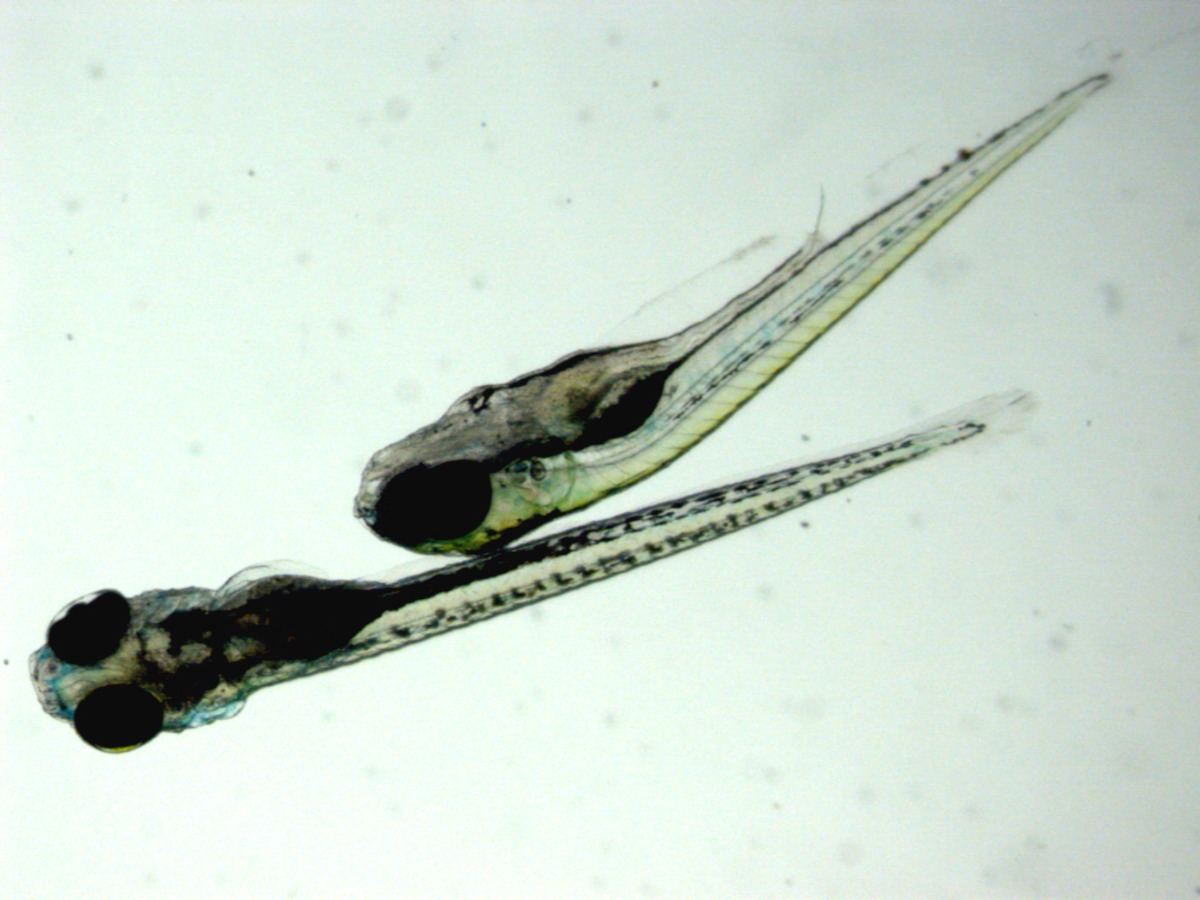
Familial Parkinson's gene
Parkinson’s disease (PD), a crippling and widespread neurodegenerative disease, is under investigation at institutes all over the world including the Erasmus Medical Center in Rotterdam, the Netherlands.
Early-onset
One of Erasmus’ fields of study is early-onset and familial Parkinson’s. Interestingly, while most cases of Parkinson’s are idiopatic, or sporadic PD, the disorder is called early-onset or young-onset when the individual is diagnosed before the age of 50. These patients are different from a scientific perspective.
Genetic cause
Lopes da Fonseca and colleagues reported on an interesting point mutation that has been linked to cases of familial PD. Zebrafish also express this gene, and the study showed that it plays a crucial role in embryonic development.Partial knockdown of this gene resulted in atypical behavior in 7 dpf larvae, as was measured in DanioVision using a light-dark-light paradigm (15-45-45 minutes).
Changing activity patterns
The wild type group behaved as expected: with a decrease in velocity during the dark phase (and later, the initial drop), then movement increase after the light was turned on again. However, video tracking revealed the knockdown group showed a generally lower velocity and a relative increase in speed during the beginning of the dark phase.
DYRK1A gene and autism
The DYRK1A gene is associated with Down syndrome, but recent studies suggest it also plays a role in autism. This is hard to investigate in murine models, due to the high mortality rate in knockout models. Kim et al. (Molecular Autism, 2017) published results using a zebrafish knockout model that indeed showed signs of autism.
Tracking activity and social behavior
Tracking both larval and adult fish with DanioVision and EthoVision XT, they found that sleep and waking behavior did not differ from that of wild type zebrafish, but social interaction and shoaling were impaired, indicating autistic-like behavior.

Dark flash test
One of the test in DanioVision was a dark flash test in which dark flash pulses were used to induce a startle response. These lights conditions are programmed and controlled in the included EthoVision XT software. With EthoVision XT, the startle response was measured by taking the distances moved per 10-second time bins.
Activity
The locomotor activity, as measured by EthoVision XT in 30-second time bins during day and night phases, was used to assess sleep and waking behavior.

Zebrafish research with DanioVision
Larvae activity and movement patterns are basic measurements used in many studies. They can reveal information on stereotypic and epileptic behaviors, circadian rhythmicity, motor control, movement disorders, neural development, and more.
DanioVision is a complete system designed for exactly these types of experiments with zebrafish larvae, and is often used in studies related to drug development, safety pharmacology, behavioral genetics, and circadian rhythmicity.
Parkinson's neurorestorative drugs
There is still no cure for Parkinson’s. Recent studies have been focusing on neurorestoration. A recent study from Cronin and Grealy (Neuroscience, 2017) investigates several existing drugs, like Isradipine (used for high blood pressure), Minocycline (antibiotic), and Rasagiline (normally used in conjunction with PD drug Levodopa ).
Locomotor functioning of PD zebrafish model
In order to test whether isradipine, minocycline, and rasagiline could protect or restore locomotor functioning after treatment with 6-OHDA (a well-known model for Parkinson’s), the zebrafish larvae were tested using DanioVision.
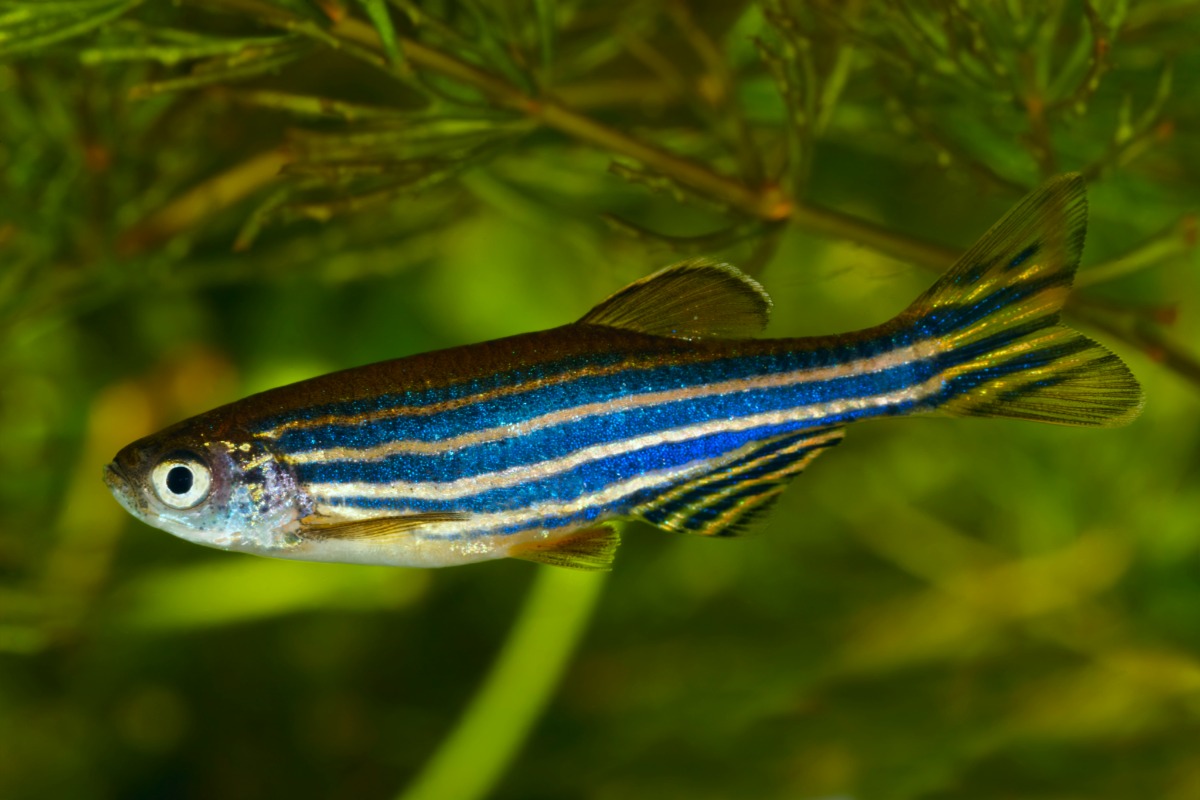
Individual larvae were placed in a 96-well plate, and their activity was measured during a 50-minute period at 5 days post fertilization, with 10-minute alternating light-dark cycles. The researchers used EthoVision XT to calculate mean distance moved per minute and total distance moved.
Locomotor function restoration
Researchers found that rasagiline restored locomotor function in 6-OHDA-treated zebrafish. It also restored dopaminergic neurons. Minocycline also restored locomotor function, but did not have the restorative effect in the brain. Isradipine showed no significant improvement in either area.
References
- Bos, R. van den; Mes, W.; Galligani, P.; Heil, A.; Zethof, J.; Flik, G.; Gorissen, M. (2017). Further characterisation of differences between TL and AB zebrafish (Danio rerio): Gene expression, physiology and behaviour at day 5 of the larval stage. PLoS ONE, 12 (4), e0175420.
- Cronin, A.; Grealy, M. (2017). Neuroprotective and Neuro-restorative Effects of Minocycline and Rasagiline in a Zebrafish 6-Hydroxydopamine Model of Parkinson’s Disease. Neuroscience, 367, 34-46.
- Kim, O.-H.; Cho, H.-J.; Han, E.; Hong, T.I.; Ariyasiri, K.; Choi, J.H.; Hwang, K.-S.; Jeong, Y.-M.; Yang, S.-Y.; Yu, K.; Park, D.-S.; Oh, H.-W.; Davis, E.E.; Schwartz, C.E.; Lee, J.-S.; Kim, H.-G.; Kim, C.-H. (2017). Zebrafish knockout of Down syndrome gene, DYRK1A, shows social impairments relevant to autism. Molecular Autism, 8, 50.
- Lopes da Fonseca, T.; Correia, A.; Hasselaar, W.; van der Linde, H.C.; Willemsen, R.; Outeiro, T.F. (2013). The zebrafish homologue of Parkinson's disease ATP13A2 is essential for embryonic survival. Brain Research Bulletin, 90, 118-126.
Relevant blogs
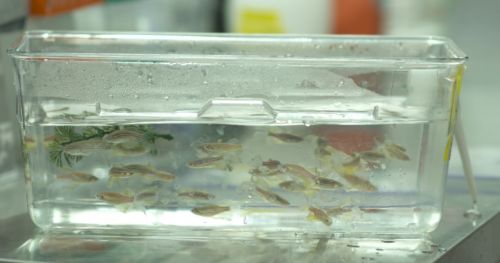
How to measure a zebrafish larva’s highly stereotyped response to water motion?
At the Max Planck Institute for Medical Research in Heidelberg, Germany, Groneberg and colleagues researched one of the neural bases for behavior in Danio rerio.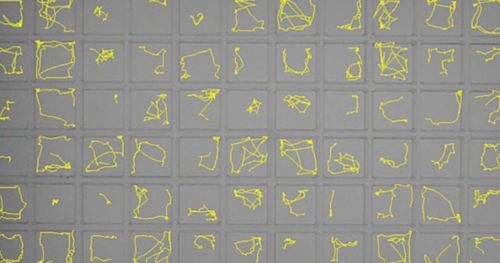
Behavioral assays establish zebrafish in drug screening
Zebrafish are increasingly swimming into the view of large-scale drug screening projects. Behavioral screens can be used as a first-line detection tool for new drug effects, and their popularity continues to grow.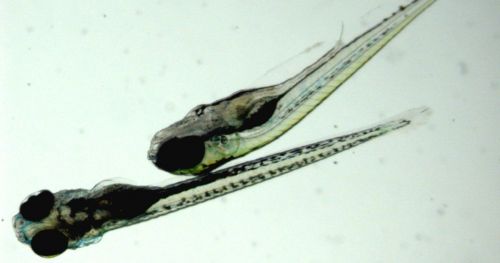
 English
English German
German French
French Italian
Italian Spanish
Spanish Chinese
Chinese
